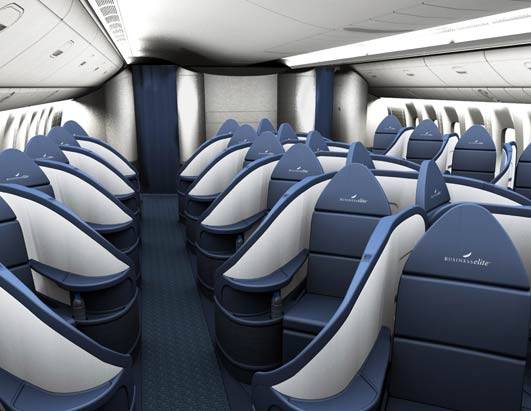 Loyalty Programs are structured marketing efforts that reward and encourage frequent and continued purchasing behavior. The theory being a more loyal customer translates to a happier customer – and most importantly, a more profitable customer.
Loyalty Programs are structured marketing efforts that reward and encourage frequent and continued purchasing behavior. The theory being a more loyal customer translates to a happier customer – and most importantly, a more profitable customer.
Loyal customers translate into higher profits because they generally purchase products more often and are likely to recommend those services to their friends and family. The ‘program’ is a set of incentives designed to make the customer more loyal – but do they??
Understanding Brand Loyalty
Loyalty is the ‘allegiance’ to a brand. Even if a competing product is better (using what whatever criteria ‘better’ means) someone with ‘brand loyalty’ will choose the brand to which they are devoted. Even if the brand does not live up to standards and/or promises – loyalty to the brands keeps customers in place.
The NFL is a perfect example of brand loyalty implemented the right way. “True Fans” will tell you no matter what – they are a true blue “Insert_Team_Here” fan. Team has a losing season – “I gotta stick by my team!”. Traded away your favorite player – “But that’s my team”. No longer live in the city is which your team plays (thus receive no benefits from the tax revenues the franchise generates) – “so what, I am a real fan”. On and on….
Pretty irrational for someone to have such devotion to a corporation, but it exists and is the holy grail for Marketers. This level of loyalty is very difficult to lose – which is why NFL franchise merchandising is so profitable – regardless of the team’s record. The key here is loyalty does not require incentives – loyal customers gladly purchase the product, will willingly pay to stand in line to purchase (think Personal Seat Licenses) and attempt to convert their friends and family into loyal customers.
Incentives – Loyalty the Wrong Way
On the other hand, incentives is the brand providing some form of motivation to do something (buy, register, etc.) – usually in the form of a reward. For example, if you purchase X from us – we will give you Y. The theory here is by engaging the customer through incentives, the brand can ‘win them over’ and create loyalty. While this certainly sounds rational, the metrics used to measure loyalty actually measure ‘incentive engagement’.
I’ll give you an example of false loyalty. I am a Platinum member of Delta Airlines Skymiles loyalty program. Platinum members receive a boat load of benefits, including free upgrades to first class, access to airport lounges, double points, and waived fees for baggage & standby flights amongst many others. According to Delta’s books, I am a ‘loyal’ customer – since I had to fly a minimum of 75,000 miles last year to reach this level.
I will admit – I just love sitting in first class and jumping in front of the line when boarding. I also tend to fly Delta over any other airline that flies the same route – so the incentives Delta offers has increased my purchase rate – and thus their revenues. But the reality is – I’m not necessarily a loyal customer – it’s an arrangement of mutual convenience. Does Delta have the best airfare price? Rarely. Does Delta have the best airplanes? Not even close. Do I enjoy dealing with Delta airline employees? Funny.
The Difference Between Loyalty and Incentives
The fact is I didn’t pay for most of the 75,000 miles I flew last year – the company I worked for did. Because the benefits from my work related travel also benefits my personal vacation trips, I choose to book with a single provider. I fly Delta because they give me incentives to do so; but if they remove the incentives – they lose a customer. Free seat upgrades don’t build loyalty when the remainder of the purchase experience is not positive. Incomprehensible pricing structures, ridiculous ticket change fees, poor customer service and a host of other poor practices have kept the airlines (Delta included) at or near the bottom of satisfaction surveys for the last couple of decades. If I were truly a “loyal” Delta customer – not only would I be glad to use them as my exclusive carrier even if they took away all incentives, but I’d also recommend the carrier to my friends and family. I assure you I do neither.
So What Does This Mean?
This blog article targets two audiences – those who are customers of loyalty programs and the loyalty brand managers that manage those programs. To the brand managers, the metrics you are using do not accurately gauge the satisfaction of your customers. I know this because not one brand loyalty program I use – Delta, Hilton, Amex, etc. have ever bothered to measure my satisfaction. But their metrics – lifetime customer value, ROI, profit per transaction, etc. tell them “since I keep purchasing, I must be happy”. Err, not so much. If you want ‘loyalty’ treat your customers better. I know, I know – what a novel idea; but spending money on NPS or Surveys without any process or infrastructure in place to do anything with the results is a waste of resources. In short, you cannot build long term customer allegiance with a loyalty program that measures profit instead of satisfaction.
As for the customers of loyalty programs, my suggestion is to use your clout to make the products and services you use better. As loyalty program members are typically the most profitable segments of customers, feedback from this group is least given a cursory review – often in-depth attention. For example, a US airline carrier recently attempted to impose new sets of ridiculous fees – like charging for water. These fees were quickly rescinded – not because of some media outcry – but because the frequent flyers (most profitable segment) threatened to stop flying with the airline. Again, I’m not suggesting loyalty programs aren’t of any benefit, I am suggesting that not using the influence that comes with it to make the product better is a missed opportunity.
As for the NFL fans, you can’t argue to irrational people – sorry.
Happy Travels














